California has around 1,557 miles of HOV lanes meant to reduce traffic congestion and encourage ridesharing.
But driving in an HOV lane in California differs from using regular lanes, and breaking the rules can lead to hefty fines.
Read on to learn how HOV lanes in California work, who can use them, the laws that govern them and what’s new for HOV lanes in 2025.
What Is an HOV Lane?
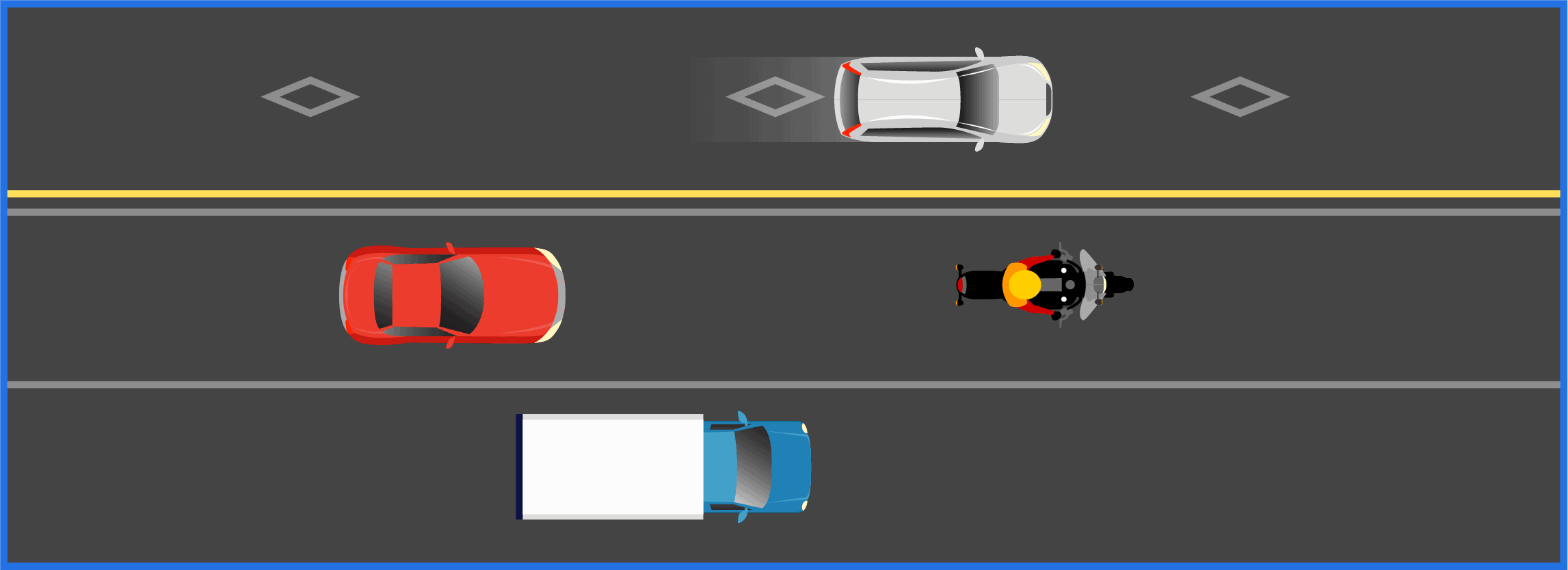
The acronym “HOV” stands for high-occupancy vehicle and describes a traffic lane marked by white diamond symbols on the pavement. Also called a carpool lane, this program is designed to help relieve traffic on highways and reduce transport emissions by encouraging ridesharing. These special lanes are reserved for vehicles with at least one passenger other than the driver, although there are exceptions.
HOV lanes are typically located on the far left of the highway and marked by road signs with the message “HOV 2+,” “HOV 3+,” “HOV lane entrance,” or similar. These numbers indicate the minimum number of passengers required in a vehicle to use the lane (including the driver).
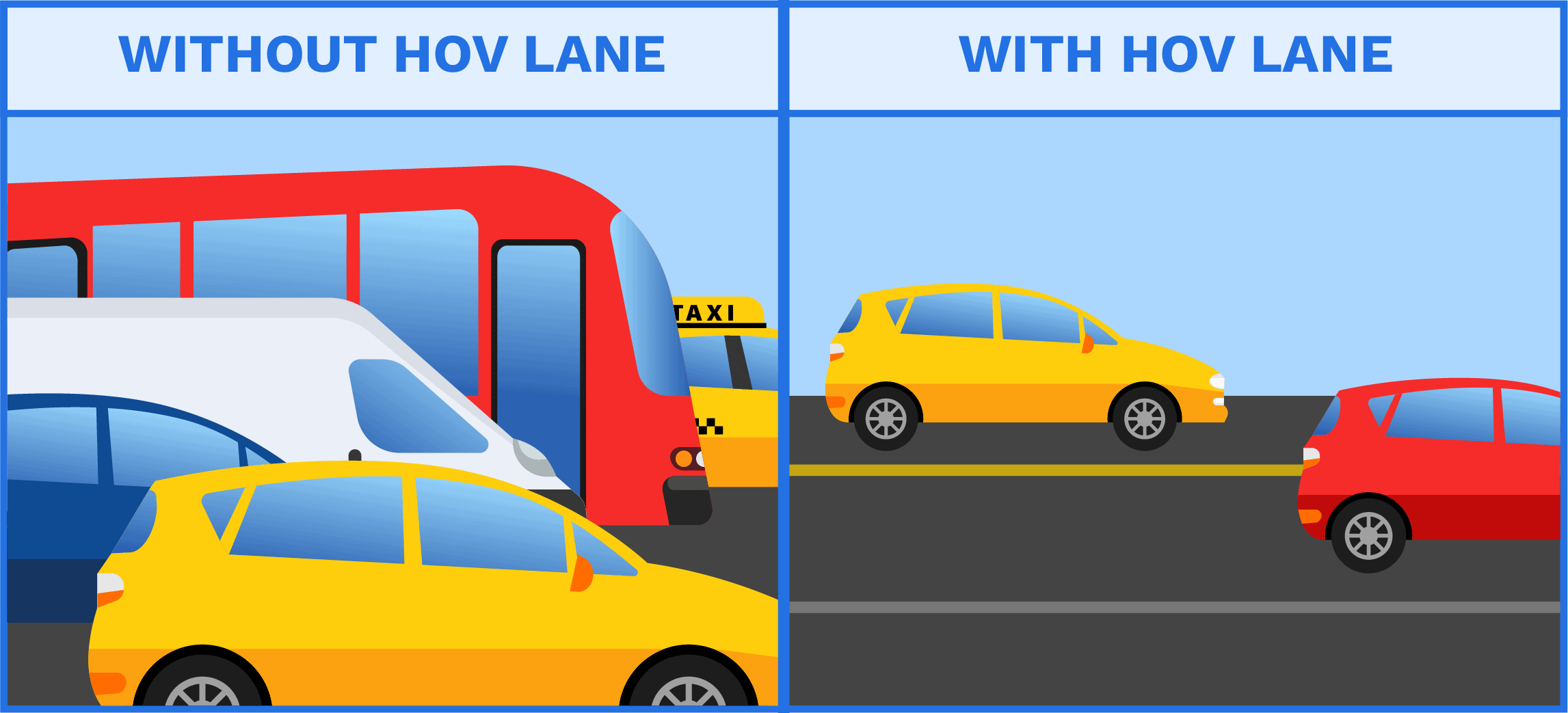
The exact way HOV lanes operate can vary by location due to the differences in traffic and commuter patterns in California’s cities. With that in mind, make sure you check the operating hours before entering the lane.
Traffic school can help you keep a clean driving record, prevent insurance increases, and more!
Types of HOV Lanes in California
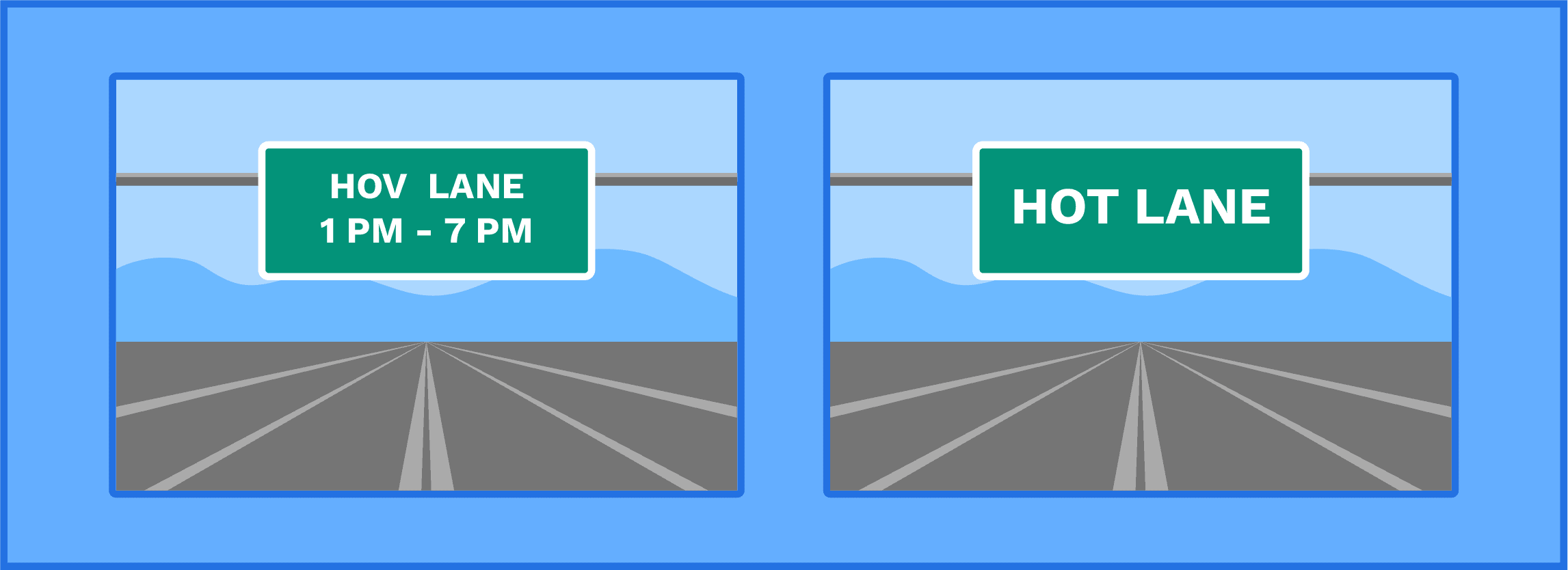
Part-Time HOV Lanes
Part-time HOV lanes are lanes that are treated as HOV lanes only during specific times (when traffic volume tends to be the highest, like during morning and evening rush hours), and revert back to normal traffic lanes outside of their HOV hours.
Outside of the posted hours, anyone can drive in these lanes, even single drivers without passengers, as long as they follow all other traffic laws.
Part-time HOV lanes will typically have signs posted to alert drivers of their hours.
For example, in Southern California, HOV lanes are often separated from other lanes by a buffer zone and can be used 24/7, Monday to Sunday. In Northern California, they are operational only during rush hour (e.g., 3 PM-7 PM) on weekdays. Outside these times, any vehicle can use the lanes.
High Occupancy Toll Roads
Another type of HOV lane is a high occupancy toll lane, also known as a HOT lane. Single drivers without passengers are allowed to use HOT lanes, but only if they pay an additional toll for doing so.
Vehicles limited to 55 mph speed limits, including tractor-trailers, school buses, and other large vehicles, are not allowed to use HOT lanes at any time.
FasTrak HOT Lanes
FasTrak is a system that allows drivers to use designated HOT lanes without stopping to pay tolls. Instead, they can pay electronically via their FasTrak accounts.
These lanes are marked with the sign “FasTrak Only” or “FasTrak Required,” so you should be able to recognize them easily.
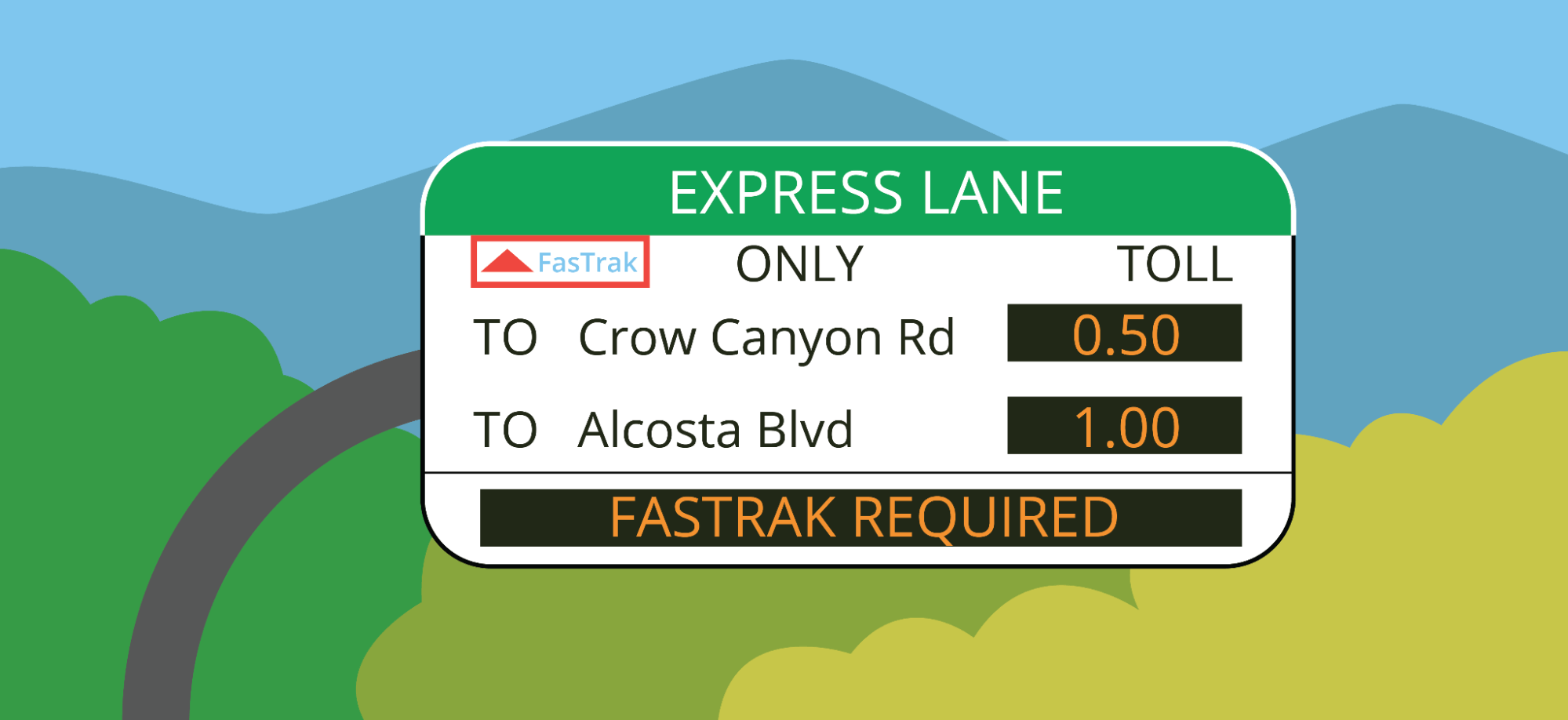
After you sign up for a FasTrak account, you’ll get a transponder to affix to your car. When you go through a FasTrak-only lane, the payment is automatically collected from your account.
Who Can Use HOV Lanes in California?
HOV lanes are generally restricted to vehicles with two or more occupants, including the driver. Occupants also include children and infants – but not unborn babies. Pets don’t count as occupants.
Under California law, an occupant is any person who uses a seat belt, child seat, or other safety restraint devices. Therefore, some types of buses (e.g., school or charter buses) may not drive on these lanes because their occupants don’t wear safety restraints.
The following types of vehicles can use HOV lanes:
- Personal or commercial vehicles with 2+ occupants (3+ on some lanes, such as the El Monte Busway.)
- Mass transit vehicles (e.g., public transportation buses)
- Qualifying clean air vehicles (CAVs), such as plug-in hybrids, zero-emission cars, and alternative-fuel vehicles. They must meet emissions guidelines and purchase a decal to use the HOV lane.
- Emergency and response vehicles, including those without passengers (under certain conditions)
- Blood transport vehicles
- Motorcycles
Mass transit vehicles, blood transport vehicles, emergency vehicles, and motorcycles are considered exceptions to HOV occupancy rules.
Qualifying hybrid vehicles and CAVs are currently allowed on HOV lanes, even if they have only one passenger. According to a 2016 study, 40% of plug-ins in California were purchased for carpool access.
However, hybrid and zero-emission vehicles may lose access to HOV lanes starting on September 30, 2025, when the state’s CAV decal program is set to expire. We can only wait and see if Congress will approve its extension.
Read: Is Lane-Splitting Legal in California?
Rules for Using California HOV Lanes
California’s carpool lanes are regulated by the Department of Transportation and local authorities. The rules governing their use are enforced by the California Highway Patrol, whose goal is to keep violation rates below 10%.
Let’s take a closer look at these regulations and what they mean for drivers:
- Occupancy requirements: Make sure you have at least two or three passengers (depending on the local regulations/signage) when driving on HOV lanes in California. Note that some lanes are open to single-occupancy electric vehicles with proper decals – though this may change later in 2025.
- Display a valid decal: If you drive a hybrid or electric vehicle, apply for and affix CAV decals to your car. Also, keep the CAV certificate at hand so you can show it to the police upon request.
- Check the hours of operation: Some HOV lanes are operational 24/7, while others function part-time. Most carpool lanes in Northern California are active only during peak traffic hours, such as in the early morning and late afternoon. Those in Southern California generally operate full-time.
- Pay attention to the signage: Carpool lanes feature numerous signs indicating the applicable rules, operating hours, exit and entry points, and vehicle requirements. Keep an eye on the signage and road markings to ensure you comply with the law.
- Look for entry and exit points: Enter and leave the lane only at designated points or in areas with a single dashed white line. Don’t cross solid, double lines, regardless of their color.
- Stay informed: Check the California DMV website and local resources to stay informed about any changes to HOV lane rules.
If you’re alone in the car, refrain from using HOV lanes unless you drive an electric vehicle, emergency vehicle, or public bus. Failure to comply can lead to substantial fines.
HOV Lane Tickets: What to Do If You Get One
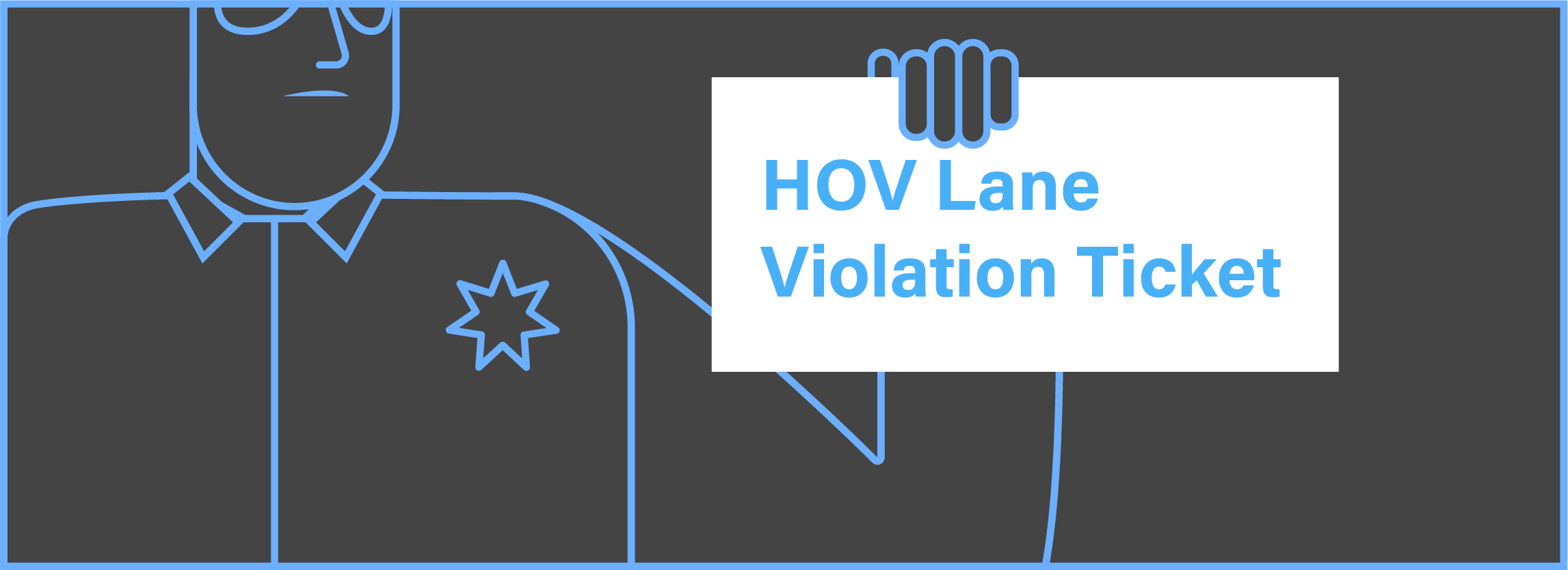
Violating HOV lane laws in California carries a minimum fine of $490. The fine can be higher for repeat offenders, and local counties can impose extra administrative fees.
Luckily, it’s possible to get the charge dismissed or at least minimize its impact. Here’s what you need to do.
1. Review the Ticket
Carefully read the information on your traffic ticket to ensure it’s accurate. Check the ticket due date, applicable fines, and your legal options. For instance, the citation may include a notice stating that you can go to traffic school.
2. Understand the Penalties
In California, standard HOV lane violations are classified as infractions, which carry less severe penalties than misdemeanors or felonies. The punishment consists of a $490 fine, but because they are non-moving violations, they carry no demerit points.
However, you may get a point on your record for other types of HOV violations, including crossing double solid lines to enter or exit the lane improperly.
3. Decide How to Plead
Next, decide whether you want to plead guilty or not guilty — and take appropriate action.
Plead Not Guilty
If you choose to plead not guilty, you must go to court and face a prosecutor. Depending on your circumstances, you can use various legal defenses to prove your innocence.
For example, you may say you were rushing to the ER or that you entered an HOV lane to avoid a collision. Just make sure you have supporting evidence.
You could also hire a traffic lawyer to represent you in court. However, legal services can cost just as much as or even more than the fine amount, so they may not be worth it unless you’re facing additional charges.
In some cases, you may be able to have a trial by written declaration. This means that instead of appearing in a courtroom, you submit a written statement to present your case.
A judge will review your statement and evidence, as well as the statement and evidence submitted by the officer who issued the ticket, and make a decision. If you’re not satisfied with the outcome, you can appeal the decision in court through a trial de novo.
Plead Guilty
If you plead guilty and pay the fine, you do not have to go to court. This option also eliminates the need for legal help.
Follow the instructions on the traffic ticket, which should explain what court to pay your fine and fees to, how to pay, and the deadline for doing so.
Be aware that failure to pay on time can result in additional fees and penalties.
4. Consider Traffic School
In California, you can mask one point from your driving record by completing traffic school. The point will be hidden from insurance carriers, preventing them from increasing your insurance rates after a traffic violation.
An HOV lane violation won’t add points to your license, meaning there’s no need to go to traffic school. But, as mentioned earlier, you may receive points for failure to comply with HOV lane rules and other traffic laws.
In this case, it makes sense to attend traffic school to keep points off your license. Our traffic course can be completed online in one sitting and includes unlimited retakes. Plus, you pay nothing until you pass the final exam.
At Best Online Traffic School, we offer the course in English, Spanish, and Chinese with free audio read-alongs. Our team also provides 24/7 support and same-day certificate submission to the court and DMV.
Start traffic school for FREE today.
5. Prevent Future Violations
The best way to prevent future violations is to know and follow the rules governing carpool lanes. Familiarize yourself with HOV lane regulations and pay attention to the signage.
It’s also a good idea to use Waze, Google Maps, or other GPS apps that provide real-time traffic updates. These usually alert drivers about HOV lanes, including their entry and exit points, and can suggest alternative routes.
Most importantly, focus on the road to make sure you don’t mistakenly enter an HOV lane when driving solo. Double-check the operating hours, plan your route ahead of time, and share the ride with others if necessary.
Last but not least, remember to apply for and display the appropriate decals if you have an electric vehicle. This alone could save you hundreds of dollars in fines.
Final Thoughts
Using an HOV lane in California is no different than driving on other roadways. You still need to obey traffic signals, keep a safe following distance, and signal when turning left or right.
The challenge lies in meeting HOV lane requirements, such as ensuring you have enough occupants during restricted hours. Also, it’s important to look for designated entry and exit areas and only cross on dashed white lines.
As a final word, remember that you may have the option to attend traffic school if you make a mistake and break the rules. Our user-friendly course can help you maintain a clean driving record and keep your insurance rates down. We serve all California counties, including San Mateo, San Bernardino, Santa Barbara and Sacramento. The best part is, you don’t pay until you pass!
See our guide to determine if you’re eligible for traffic school and what to expect.
Q&As about California HOV Lanes & Rules
Looking for further insights? Here are the answers to some frequently asked questions.
Is an HOV lane the same as a carpool lane?
Yes, HOV lanes and carpool lanes are the same thing.
Are HOV lanes free in California?
Most HOV lanes are free for qualifying vehicles, such as those carrying two or more passengers. However, some HOV lanes, such as HOT lanes, may allow solo drivers for a fee or based on traffic congestion. For example, on the 91 Express Lanes in Orange and Riverside counties, vehicles with three or more occupants can travel toll-free during most hours and at a discounted rate during peak times. Solo drivers can use these lanes by paying a variable toll based on the time of day.
Can Uber use HOV lanes in California?
Uber drivers in California may use HOV lanes only when carrying at least two or three passengers, depending on the local regulations. The same applies to all rideshare services, except for those using electric vehicles.
What does HOV 2+ mean in California?
The sign “HOV 2+” means you must have at least two passengers in the car to use an HOV lane. Similarly, HOV 3+ means you need to have at least three passengers. In both cases, the driver is counted as one passenger.
Do you need a sticker for an HOV lane in California?
If you drive an electric vehicle, you must display a valid CAV decal to use HOV lanes. This grants you the right to drive solo in the carpool lane unless prohibited by local regulations.
If you have a hybrid vehicle, you must also apply for and affix a CAV decal to your car. Note that not all hybrid vehicles are permitted to use HOV lanes with a single occupant. Only those that meet California’s emissions standards qualify for CAV decals.
Can I use an HOV lane without FasTrak in California?
Yes, you can. Some HOV lanes allow you to pay the toll without a FasTrak account. Check this list of toll facility operators in California to see their requirements.
